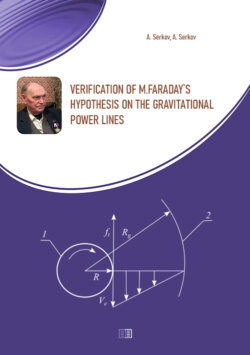Verification of M.Faraday's hypothesis on the gravitational power lines

Реклама. ООО «ЛитРес», ИНН: 7719571260.
Оглавление
А. Т. Серков. Verification of M.Faraday's hypothesis on the gravitational power lines
Introduction
Chapter 1. The gravitational field of fixed and rotating bodies
1. Introduction
2. The properties of the physical vacuum
3. The gravitational field of a stationary body
4. The gravitational field of a rotating body
Conclusions
Literature
Chapter 2. Gravimagnetic braking of celestial bodies
1. Introduction
2. Gravimagnetic power
3. Gravimagnetic braking satellites of the moon
4. The influence of gravimagnetism on planetary and satellite distance
Conclusions
Литература
Chapter 3. The dependence of planetary and satellite distances from the speed rotation of the central bodies
1. Introduction
2. Orbital distance for satellite systems
Conclusions
Literature
Chapter 4. Elite orbit in the planetary and satellite systems
1. Introduction
2. The mechanism of elite orbits formation
3. Gravitational deceleration of cosmic bodies
Conclusions
Literature
Chapter 5. On the nature of the magnetic field of celestial bodies, two types of magnetism
1. Introduction
2. The formation of magnetic fields
3. Two types of magnetism
4. Closing
Conclusions
Literature
Chapter 6. The repulsive force in space
1. Introduction
2. Gravimagnetic force
3. The repulsive forces of the Moon and Earth
4. The dependence of the repulsive forces from the radius
Conclusions
Literature
Chapter 7. Gravitational radiation and its detection
1. Introduction
2. Two types of gravitational radiation
3. The energy of gravitational radiation
4. The detection of gravitational radiation
Conclusions
Literature
Chapter 8. Rings in satellite systems
1. Introduction
2. Planetary rings
3. Rings and the rotation of planets
4. The universality of the phenomenon of the rings formation
Conclusions
Literature
Chapter 9. The mass distribution of planets and satellites in the orbital radii
1. Introduction
2. The hypothesis about the distribution of mass on the orbital radius
3. The density of orbital bodies
Conclusions
Literature
Chapter 10. On the origin of planetary and satellite systems
1. Introduction
2. Requirements of the modern theory of the origin of planetary and satellite systems
3. The hypothesis of the origin of planetary and satellite systems
4. Confirm the proposed hypothesis about the origin of planetary and satellite systems
Conclusions
Literature
Chapter 11. Magnetism of atoms and cosmic bodies. The general concept of magnetism
1. Introduction
2.0. The role of mass in an atom
2.1. The force of attraction
2.2. Repulsive forces
3. Magnetism of the Earth and cosmic bodies
4. On the mechanism of formation of a magnetic field
5. A quantitative estimate of the magnetic intensity of cosmic bodies
6. On the reasons of the unsuccessful experiment of Blackett to detect the gravimagnetic effect
Conclusion
Literature
Chapter 12.The orbital model of a water molecule
Conclusions
Literature
Chapter 13. On the problem of a unified field theory
Literature
Отрывок из книги
The M.Faraday's power lines as the most important characteristic of the gravitational field, recognized by all, and yet this idea has not found wide implementation of development has not received what she deserves. This question is especially acute in connection with the rapid development of space, the discovery of previously unknown effect ("Pioneer" and satellites "Lageos").
Without invoking the power lines of gravity is impossible to know and explain the laws of planetary distances, the distribution of mass in the solar system, the nature of planetary rings, repulsive forces, gravitational radiation, the difference between gravitational and electric magnetism. The book is an attempt to find ways to the solution these issues.
.....
With regard to satellite "Chandrayan-1, the calculation showed that the total time spent in orbit until the fall on the surface of the Moon is 644 days including 332 days after loss of communication with the satellite.
The deviations of the estimated time from the actual for other satellites are given in table 1. In the case of a satellite, the lunar Prospector" observed the coincidence of two values: 0.157.108 and 0,153.108 C. For "Smart-1" rated value is 12.5 % higher than the actual, for the "Kaguya" 15 % below the actual time of flight of the satellite. This coincidence of the calculated and observational data confirms the correctness of the made assumptions about the braking satellites of the moon due to gravimagnetic forces.
.....